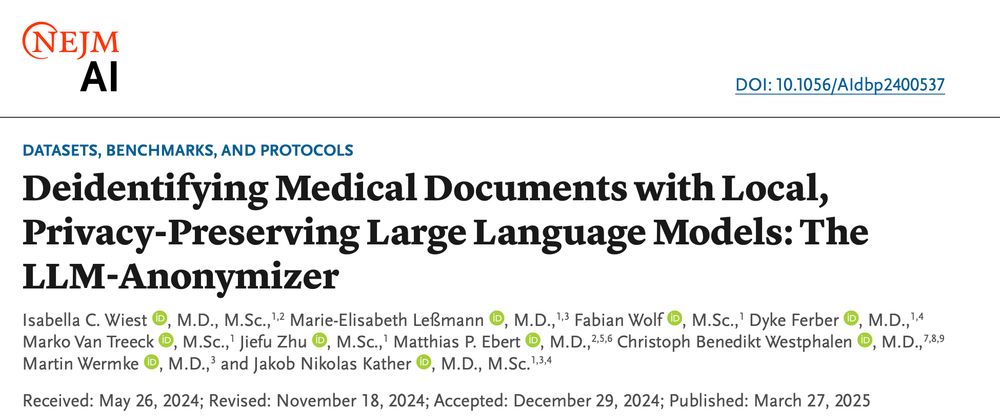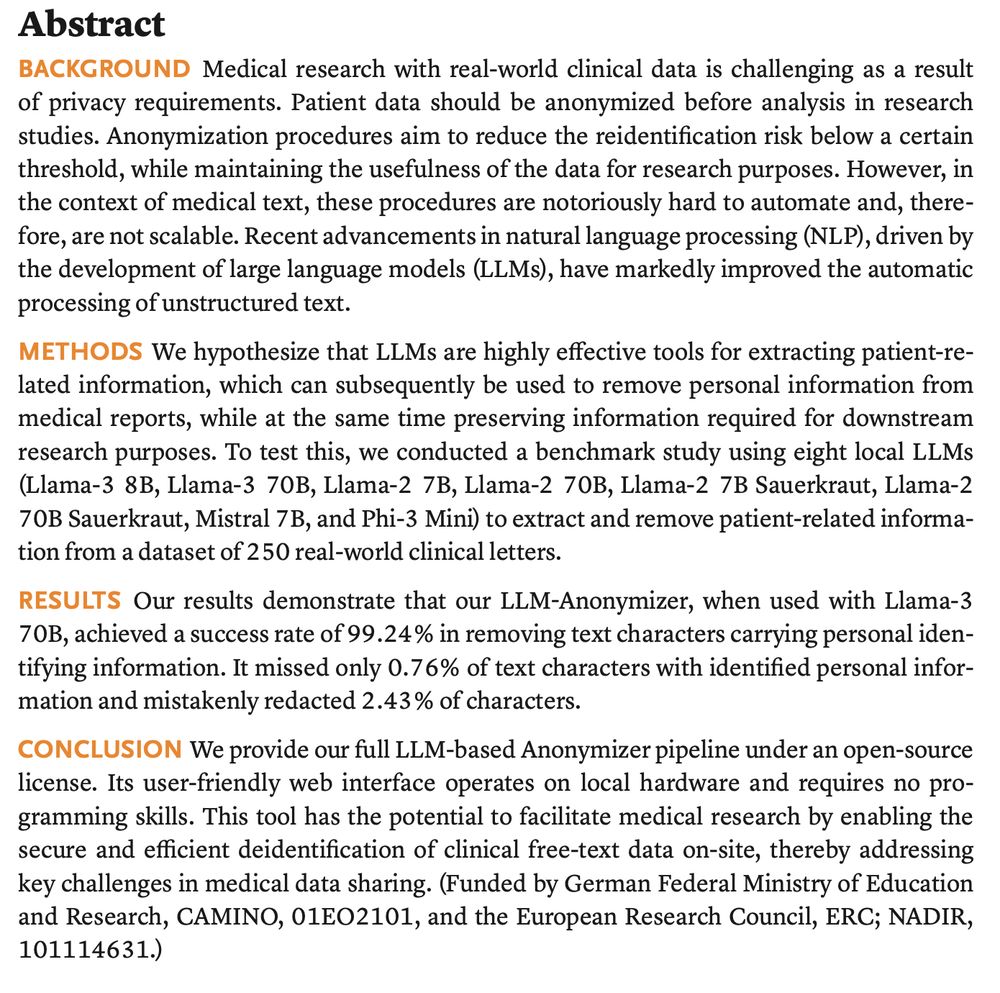
#MedSky #GastroSky

#MedSky #GastroSky
Hotspot Model got you covered.
Happy to have contributed.
Great work @aleger87.bsky.social and team!
rdcu.be/ew7qh

Hotspot Model got you covered.
Happy to have contributed.
Great work @aleger87.bsky.social and team!
rdcu.be/ew7qh
rdcu.be/ew7qh #AI #Digitalpathology

rdcu.be/ew7qh #AI #Digitalpathology
@jnkt.bsky.social @janclusmann.bsky.social

@jnkt.bsky.social @janclusmann.bsky.social
#AI #MedSky #MLSky

#AI #MedSky #MLSky
#MedSky

#MedSky
You can use our open source tool with local LLMs to robustly de-identify medical documents.


You can use our open source tool with local LLMs to robustly de-identify medical documents.
ilpost.link/Scna5U9zdB

ilpost.link/Scna5U9zdB

